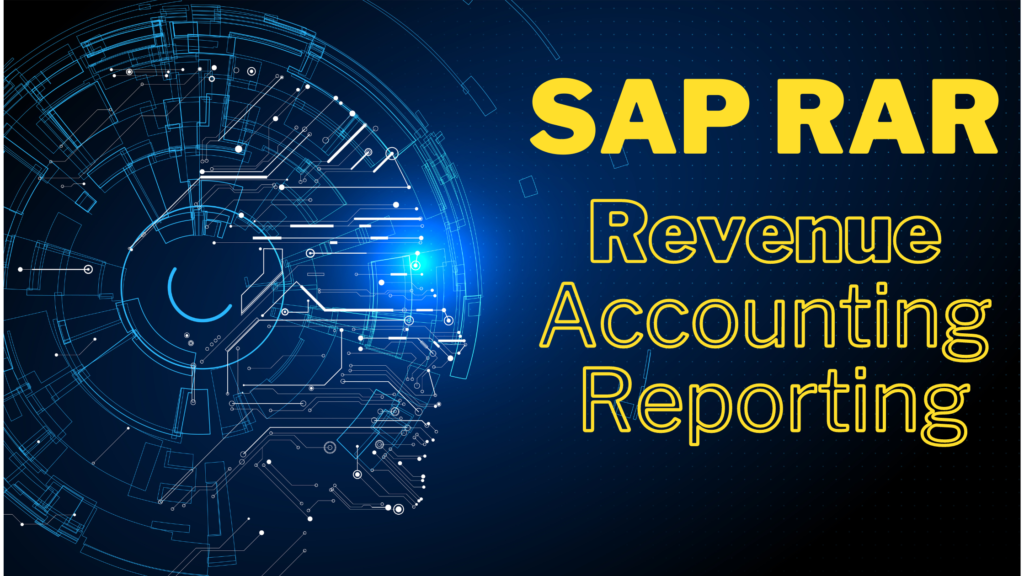
In the business sphere, the effective management of finances and revenue stands as a primary focus. Many companies rely on dedicated software and tools to optimize their financial processes, and SAP RAR (Full Form: Revenue Accounting and Reporting) stands out as a prominent solution. This article seeks to explore the details of SAP RAR, including its full form, historical development, integral components, advantages, and more.
1. Introduction to SAP RAR
SAP RAR, or Revenue Accounting and Reporting, is a powerful software application developed by SAP SE, a global leader in enterprise software. It plays a pivotal role in addressing the complex challenges of revenue recognition, accounting, and reporting.
2. What Does SAP RAR Stand For (Full Form)?
SAP RAR stands for “SAP Revenue Accounting and Reporting.” It serves as a comprehensive tool for automating and streamlining revenue accounting and reporting processes.
3. The Evolution of SAP RAR
Over the years, SAP RAR has evolved to meet the changing demands of businesses and regulatory requirements. It has transformed from a simple tool to a full-fledged solution that ensures accurate and compliant revenue recognition.
4. SAP RAR Components
SAP RAR comprises several essential components, each serving a specific purpose:
4.1 SAP RAR Data Management
This component handles the storage and management of revenue data, ensuring data accuracy and consistency.
4.2 SAP RAR Contract Management
Managing contracts is a critical part of revenue recognition, and SAP RAR’s contract management component simplifies this process.
4.3 SAP RAR Revenue Management
This is the core of SAP RAR, where it automates revenue recognition processes, ensuring compliance with accounting standards.
5. Key Features of SAP RAR
- Integration with SAP ERP
- Configurable revenue recognition
- Real-time revenue analysis
- Reporting and analytics
- Audit and compliance support
6. Benefits of Implementing SAP RAR
Implementing SAP RAR can be a game-changer for businesses, offering benefits like increased accuracy, reduced errors, and enhanced compliance with revenue recognition standards.
7. SAP RAR vs. Traditional Revenue Recognition
Compare SAP RAR to traditional, manual revenue recognition methods, and you’ll see a world of difference in terms of efficiency and accuracy.
8. SAP RAR in Various Industries
SAP RAR isn’t limited to a specific industry. It has proven its worth across various sectors, including manufacturing, healthcare, and telecommunications.
9. Implementing SAP RAR in Your Business
The implementation process is crucial. It involves data migration, configuration, and training. Hiring a certified SAP RAR consultant can be a wise choice.
10. Challenges in SAP RAR Implementation
While SAP RAR offers many benefits, implementing it isn’t without challenges. These can include the complexity of business processes and resistance to change.
11. Tips for a Successful SAP RAR Implementation
To ensure a smooth SAP RAR implementation, consider thorough planning, effective change management, and regular audits to maintain compliance.
12. SAP RAR Certification and Training
Professionals seeking to master SAP RAR can pursue certification and training programs to gain in-depth knowledge and expertise.
13. SAP RAR in the Age of Digital Transformation
As businesses embrace digital transformation, SAP RAR continues to adapt and provide robust solutions to meet evolving needs.
14. Conclusion (SAP RAR Full Form: Revenue Accounting and Reporting)

In conclusion, SAP RAR, which stands for SAP Revenue Accounting and Reporting, is a vital tool for businesses looking to streamline their revenue recognition, accounting, and reporting processes. Its components, features, and benefits make it a valuable asset in today’s dynamic business landscape.
15. FAQs on SAP RAR
1. What is the primary objective of SAP RAR?
SAP RAR’s primary objective is to automate and standardize the revenue recognition, accounting, and reporting processes in compliance with accounting standards.
2. Is SAP RAR suitable for small businesses?
SAP RAR is best suited for mid-sized to large enterprises with complex revenue recognition needs. Small businesses may find it more extensive than necessary.
3. What is the role of a certified SAP RAR consultant?
Certified SAP RAR consultants are experts in implementing and optimizing SAP RAR solutions in businesses, ensuring a successful and compliant deployment.
4. How does SAP RAR adapt to changing accounting standards?
SAP RAR’s flexibility allows for easy adaptation to changing accounting standards, ensuring that businesses remain compliant without significant manual adjustments.
5. Where can I get more information on SAP RAR certification and training programs?
You can explore SAP’s official website or authorized training centers to find detailed information on certification and training programs related to SAP RAR.
In the ever-evolving world of business, SAP RAR stands as a beacon of efficiency, accuracy, and compliance, making it an indispensable asset for companies seeking to navigate the complexities of revenue recognition and reporting. So, why wait? Get access now and empower your business with SAP RAR!
